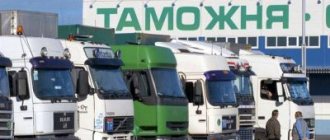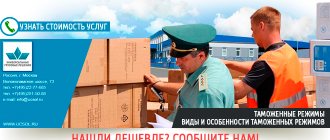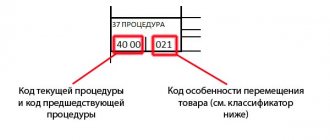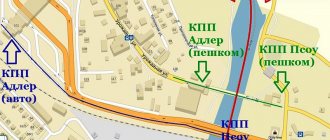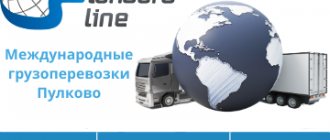Introduction
The territorial scope of customs legal norms extends to the customs territory of the Russian Federation and is limited by its customs border.
The customs territory of the Russian Federation includes its territory, as well as artificial islands, installations and structures located in the exclusive economic zone of the Russian Federation and on its continental shelf, over which the Russian Federation exercises jurisdiction in accordance with its legislation. On the territory of the Russian Federation there may be special economic zones created in accordance with federal laws, which are part of the customs territory of the Russian Federation. Goods placed in special economic zones are considered to be outside the customs territory of the Russian Federation for the purposes of applying customs duties, taxes, as well as prohibitions and restrictions of an economic nature established by the legislation of the Russian Federation on state regulation of foreign trade activities, with the exception of cases determined by the Labor Code and other federal laws. laws
The limits of the customs territory of the Russian Federation are the customs border.
The customs border coincides with the State border of the Russian Federation, with the exception of the territories. The problem of creating and operating SEZs in the context of the ever-increasing role of the WTO in the organization of the global economy, in building a hierarchy between countries, in the redistribution of added value (technological, intellectual and natural rent), in preserving the backwardness of some and the accelerated development of others, naturally attracts close attention. politicians, economists, scientists, entrepreneurs, since SEZs have a decisive impact on the development of innovation processes and contribute to the production of new competitive products.
The subject of the work is to study the features of the legal regime of the customs territory of the Russian Federation, including free economic zones and the Customs Union.
The purpose of this work is to consider the essence of the customs territory, free economic zone and customs union.
Tasks:
- Studying the concepts of customs territory, free economic zone and customs union;
- Consider the history of the emergence of the customs territory, free economic zone and customs union;
- Analyze the consequences of creating a customs territory, free economic zone and customs union;
Customs territory and customs border
In accordance with paragraph 1 of Art. 2 of the Customs Code of the Russian Federation, the territory of the Russian Federation is constituted by the single customs territory of the Russian Federation.
Customs territory is understood as state territory, which includes the land territory of the Russian Federation, territorial and internal waters and the airspace above them (Article 2 of the Customs Code of the Russian Federation). The single customs territory of the Russian Federation also includes artificial islands, installations and structures located in the exclusive economic zone of the Russian Federation and on the continental shelf of the Russian Federation, over which the Russian Federation exercises jurisdiction in accordance with the legislation of the Russian Federation (Clause 2 of Article 2 of the Customs Code of the Russian Federation). Also, on the customs territory of the Russian Federation, free customs zones and free warehouses located outside the customs zone of the Russian Federation can be legally created, with the exception of certain cases provided for by the Labor Code of the Russian Federation and other legislative acts in the customs field.
On the customs territory, the state has exclusive jurisdiction over customs affairs (clause 1 of article 5 of the Law of the Russian Federation of May 21, 2003 No. 5003-Y “On the customs tariff”). This means that in the customs territory, as well as in the state territory, state sovereignty is predominant in legal regulation.
From Article 74 of the Constitution of the Russian Federation, the following can be highlighted: on the territory of the Russian Federation, the establishment of customs borders, duties, fees and other obstacles to the free movement of goods, services and financial resources is not allowed. Restrictions on the movement of goods and services may be introduced in accordance with federal law if this is necessary to ensure safety, protect the life and health of people, protect nature and cultural values.
The concept of “customs territory” and the concept of “state territory” do not coincide due to the fact that in some cases certain parts located outside the state territory can be included in the customs territory and similarly removed from it.
The limits of the customs territory of the Russian Federation, along with the territories of free customs zones, are called the customs border.
The customs border is a conditional line that limits the customs territory of the Russian Federation. Elements of the customs border are the limits of the customs territory of the Russian Federation, as well as the limits of the territories of the economic zone of the Russian Federation, the continental shelf and special economic zones of the Russian Federation (clause 4 of Article 2 of the Customs Code of the Russian Federation). The customs border and the state border in a number of cases may or may not coincide, but the concepts of “customs border” and “state border” themselves can never coincide, since the state border is a real line passing through the area and is determined by special designations , establishing the limit of the action of the state’s sovereignty, while the customs border is determined by an imaginary line, that is, conditional, limiting the action only of the economic sovereignty of the state.
How to choose the right customs declaration procedure?
What is the customs procedure?
All goods transported across the border of the Customs Union (imported, exported) are subject to mandatory declaration. In other words, the declarant must provide the customs authority with information about the goods, the chosen customs procedure and other data necessary for their release.
The customs procedure is one of the levers of customs regulation in relation to goods. Essentially, this is a set of rules that determine the requirements for goods and the conditions for their use within the territory of the Customs Union or beyond its borders.
The choice of customs procedure is the prerogative of the declarant, and he has the right to change it at any time. At the same time, the declarant is responsible for compliance with the conditions for placing the goods under the customs procedure and the requirements for this product.
Why is it important to choose the right customs procedure?
The customs procedure is not an empty formality. It determines the procedure for moving goods across the customs border depending on its purpose. In addition, it is the customs procedure that establishes the so-called “framework” within which the goods can be used, the rights and obligations of the person moving the goods, as well as the requirements for the goods placed under a specific customs procedure. Therefore, before choosing one or another procedure, the declarant must think through all the details and subtleties associated with moving goods across the customs border.
The choice of customs procedure also has economic significance. For example, an enterprise, under a contract, imports an expensive device that has no analogues in the Russian Federation for testing in its own production conditions. If the declarant declares customs release for domestic consumption, he must pay customs duties and taxes, which can be quite significant. Therefore, taking into account the purpose and period of import of goods for testing, the temporary import procedure would be more preferable in this case. It involves full or partial exemption from customs duties and taxes, as well as the non-application of non-tariff regulation measures with subsequent placement under the customs procedure of re-export.
Another example. The organization needs to take part in the international exhibition and display models of snow removal equipment, brochures and souvenirs as exhibits. If you declare the export procedure, all exhibition exhibits will be exported outside the customs territory with payment of all due customs duties, with the application of prohibitions and restrictions. And since the customs export procedure provides for the export of goods for permanent use outside the customs territory, when moving across the border they will lose the status of goods of the customs union. Accordingly, when they are imported back, the customs procedure for release for domestic consumption will be declared, also with the payment of all due customs duties, in compliance with prohibitions and restrictions. In this situation, the optimal customs procedure would be the temporary export of exhibition exhibits. In accordance with it, exhibits will be exported outside the customs territory for the duration of the exhibition with conditional exemption from payment of export customs duties and without the application of non-tariff regulation measures. When re-imported, they will be placed under the customs re-import procedure.
As you can see, the correct choice of customs procedure allows you to significantly save the financial and organizational resources of the company, so this point is clearly not worth neglecting.
Types of customs procedures
Article 202 of the Customs Code of the Customs Union establishes 17 types of customs procedures:
- release for domestic consumption;
- export;
- customs transit;
- processing in customs territory;
- processing outside the customs territory;
- processing for domestic consumption;
- temporary import (admission);
- temporary export;
- bonded warehouse;
- free customs zone;
- re-import;
- re-export;
- destruction;
- refusal in favor of the state;
- free trade;
- free warehouse;
- other special customs procedures
Each customs procedure has its own distinctive conditions, but several general rules apply to all without exception:
- compliance with prohibitions and restrictions when moving goods under customs procedures;
- permitting procedure for the release of goods in accordance with the declared procedure;
- mandatory compliance with the conditions and requirements of the chosen customs procedure;
- the day of placing goods under the customs procedure is the day of release of the goods by the customs authority;
- the right to change the selected customs procedure to another.
What to consider when choosing a procedure
To determine and declare the customs procedure, you need to know the following information about the product:
- peculiarities of goods movement (import-export);
- status of goods for customs purposes (foreign or goods of the Customs Union);
- the conditions under which it is purchased;
- period of import or export;
- purpose and nature of the goods (purpose of movement);
- prospects for further use of the product.
The content of customs procedures, the procedure and conditions for their application are described in detail in Chapter 29 of the Customs Code of the Customs Union, as well as Chapter 26 of the Federal Law of November 27, 2010 No. 311-FZ.
3. Customs territory and customs borderIn accordance with paragraph 1 of Art. 2 of the Labor Code of the Russian Federation, the territory of the Russian Federation is constituted by the single customs territory of the Russian Federation.
Customs territory is understood as state territory, which includes the land territory of the Russian Federation, territorial and internal waters and the airspace above them (Article 2 of the Labor Code of the Russian Federation). The single customs territory of the Russian Federation also includes artificial islands, installations and structures located in the exclusive economic zone of the Russian Federation and on the continental shelf of the Russian Federation, over which the Russian Federation exercises jurisdiction in accordance with the legislation of the Russian Federation (clause 2 of Article 2 of the Labor Code of the Russian Federation). Also, on the customs territory of the Russian Federation, free customs zones and free warehouses located outside the customs zone of the Russian Federation can be legally created, with the exception of certain cases provided for by the Labor Code of the Russian Federation and other legislative acts in the customs field.
On the customs territory, the state has exclusive jurisdiction over customs affairs (clause 1 of article 5 of the Law of the Russian Federation of May 21, 2003 No. 5003-Y “On the customs tariff”). This means that in the customs territory, as well as in the state territory, state sovereignty is predominant in legal regulation.
From Article 74 of the Constitution of the Russian Federation, the following can be distinguished: on the territory of the Russian Federation, the establishment of customs borders, duties, fees and other obstacles to the free movement of goods, services and financial resources is not allowed. Restrictions on the movement of goods and services may be introduced in accordance with federal law if this is necessary to ensure safety, protect the life and health of people, protect nature and cultural values.
The concept of “customs territory” and the concept of “state territory” do not coincide due to the fact that in some cases certain parts located outside the state territory can be included in the customs territory and similarly removed from it.
The limits of the customs territory of the Russian Federation, along with the territories of free customs zones, are called the customs border.
The customs border is a conditional line that limits the customs territory of the Russian Federation. Elements of the customs border are the limits of the customs territory of the Russian Federation, as well as the limits of the territories of the economic zone of the Russian Federation, the continental shelf and special economic zones of the Russian Federation (clause 4 of Article 2 of the Labor Code of the Russian Federation). The customs border and the state border in a number of cases may or may not coincide, but the concepts of “customs border” and “state border” themselves can never coincide, since the state border is a real line passing through the area and is determined by special designations , establishing the limit of the action of the state’s sovereignty, while the customs border is determined by an imaginary line, that is, conditional, limiting the action only of the economic sovereignty of the state.
Table of contents
